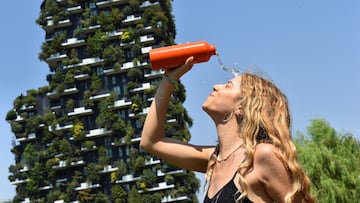The signs that indicate when ‘El Niño’ could arrive: and how it would affect the climate
NOAA is reporting that there are signs that indicate an ‘El Niño’ could arrive this summer. What will this mean for temperatures during the hotter months.


The National Oceanic and Atmospheric Adminstration (NOAA) reported in mid-April that an El Niño could materialize this summer —but what does that mean?
Two weather phenomena tracked by scientists are La Niña and El Niño, and each corresponds with weather patterns worldwide. NOAA’s modeling indicates that “there is a 62% chance El Nino will develop sometime between May and July.” Over the last two years, we have been in a La Niña weather pattern, which in the United States typically brings wetter weather to the Midwest and Northwest, but a dryer climate to the southern regions of the country.
Read more from AS USA:
- The happiest countries in the world
- The most affordable places to retire in the US in 2023
- Which European countries are not part of NATO?
What weather is seen in an El Niño?
Unlike La Niña conditions, those associated with El Niño are usually marked by a more powerful southern jet stream. With the jet stream pushed down, rainfall usually picks up across the south, particularly the Southwestern states.
Related stories
However, whether or not climate change impacts these phenomena is an open question. Typically during La Nina years, California would see a much dryer climate. This year the state has seen more rain than it has in decades, which would be more common during an El Niño. Thus, while weather patterns and trends are helpful for public officials to ensure they are prepared for extreme temperature events and possible natural disasters, there is still wide variation in how these two oscillations manifest.
NOAA has described tracking the phenomenon “as a “hint” of what may be in store,” with it working “amazingly” at times and others “not so much.” For meteorologists, the record-breaking storms in California during a La Nina fit into the latter category, as they did in the winter of 2016-2017.

